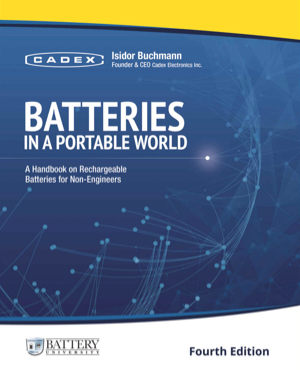NOTE: This article has been archived. Please read our new "Cost of Power" for an updated version.
Electrical energy from non-rechargeable (primary) batteries is expensive in relative terms and its use is limited to low power applications such as watches, flashlights and portable entertainment devices. Cell phones, laptops and power tools run mainly on rechargeable (secondary) batteries.
In this paper we calculate the cost to produce 1000 watts of power for one hour (1kWh) from different energy storage medias. We first look at primary and secondary batteries; then compare the energy cost derived from an internal combustion motor, the fuel cell and finally the electrical grid.
The primary battery
Figure 1 reveals the cost of energy using commercial alkaline cells. The right column shows a lithium battery for still cameras and memory backup.
It can be seen that larger cells provide a lower cost per kWh than small cells. The energy cost from the AA is more than half that of the smaller AAA. The C cell provides the lowest cost per kWh. The D cell has gone up in cost because of moderate use. Advanced systems, such as lithium, provide very high energy density at a premium cost. The energy cost of the 6-volt camera battery is more than ten times that of an alkaline C cell.
 |
| Figure 1: Cost of energy obtained by primary batteries. The energy cost from primary batteries is high and increases with smaller battery sizes and systems with high energy densities. _______________ *The nominal voltage is used to calculate the Wh. Because of falling voltage during discharge, the actual energy is less than what is shown. |
Primary batteries hold more energy than secondary batteries per size and weight. Operational readiness, long storage and instant readiness are other benefits. Primary batteries contain little toxic substances and are considered environmentally friendly.
The secondary battery
Secondary batteries provide far more economical energy than primaries, as Figure 2 reveals. This analysis is based on the estimated purchase price of a commercial battery pack and on the number of discharge-charge cycles it can endure before replacement is necessary. The calculated cost does not include the electricity needed for charging, nor does it account for the purchasing cost of the charging equipment.
 |
| Figure 2: Energy and cost comparison using rechargeable cells. Older chemistries are generally cheaper in costs per kWh than newer systems. Larger batteries are more cost-effective than smaller ones. |
Newer chemistries provide higher energy densities than conventional batteries per size and weight but the cost per kWh is higher. This cost is, to a large extent, governed by the number of charge/discharge cycles the battery can endure.
The low costs of nickel-cadmium can only be achieved by applying a full discharge once every 1-2 month as part of a maintenance program to prevent memory. If omitted, nickel-cadmium is on par with nickel-metal-hydride and lithium-ion in terms of cycle life. Lack of maintenance would increase the cost three-fold. Environmental conditions, such as elevated temperatures and incorrect charging, reduce the expected battery life of all battery chemistries. The calculated cycle life is based on best cases.
By far the lowest cost per kWh is lead-acid for wheelchairs and scooters. Running a laptop off a large lead-acid battery would reduce the energy cost twenty fold. This, however, would be a hard sell.
The combustion engine
Figure 3 compares the energy cost to generate 1kW of energy from the primary AA alkaline cells, a nickel-cadmium pack, a combustion engine used in a midsize car, fuel cells and the electrical grid. The cost estimation takes into account the initial investment, fuel costs where applicable and eventual replacement of the systems.
 |
| Figure 3: Cost of generating 1kW of energy. This takes into account the initial investment, fuel consumption where applicable, maintenance and eventual replacement of the equipment. The lowest cost power source is the utility; the most expensive is primary batteries. |
The fuel cell
The fuel cell offers the most effective means of generating electricity but is expensive in terms of cost per kWh. Fuel cells, as a battery replacement, will only become economically viable once such units are available in compact design at a reasonable price.
Fuel cells for stationary applications are still more expensive than diesel. The least viable application in terms of cost is fuel cells for vehicles. The internal combustion motor, as we know it today, is hard to beat. According to the US Department of Energy, hydrogen is four times as expensive as gasoline and the fuel cell is ten times as expensive to build as a gasoline engine. Incentives other than cost may be needed to entice motorists to switch to the environmentally friendly fuel cell.
The lowest cost per kWh is electricity from the grid. The energy can be generated in remote locations. The transportation maintenance and costs are relatively low. All costing information is based on current estimates and assumptions.

Comments
Looking for comments from the previous website?
Comments from the previous website are not compatible with our new commenting system but we have preserved them so our users can still reference and make use the information in them.
